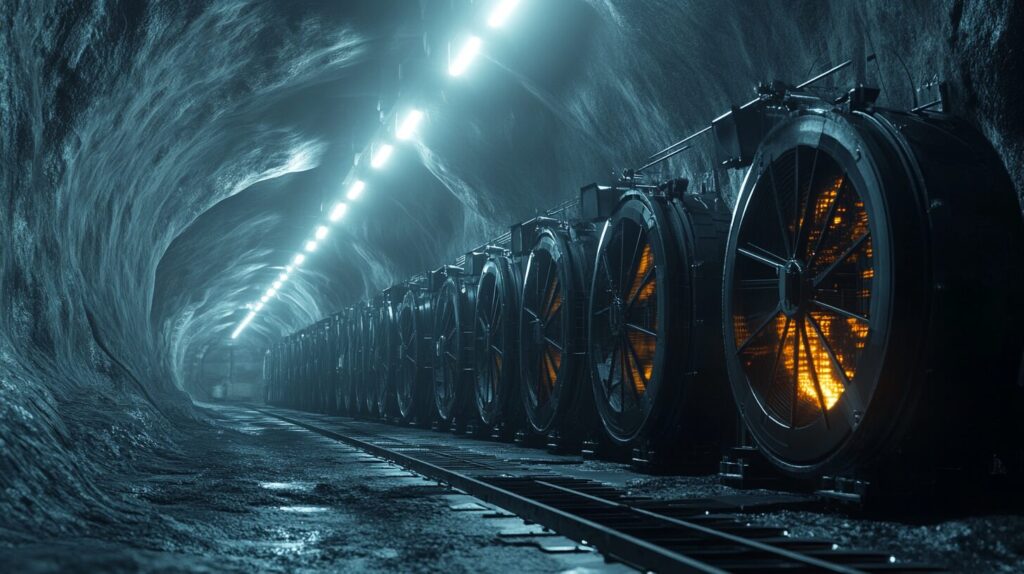Terahash” frequently comes up when after crypto mining process, especially when discussing the performance and efficiency of mining hardware. Terahash is a measurement unit that represents the computational power of mining equipment, indicating how many trillions of hashes a machine can calculate per second.
Definition and Understanding of Terahash with an Example
Terahash (TH/s) is a unit of measurement employed to quantify the computational power of a cryptocurrency mining machine. Specifically, it measures how many trillion (1,000,000,000,000) hash calculations a machine can perform per second. In cryptocurrency mining, a “hash” is a fixed-length string of data derived from an input used to validate transactions on the blockchain. The more hashes a machine can compute in a given timeframe, the higher its chances of triumphantly mining a new block and earning rewards.
For example, if a mining rig has a power of 10 TH/s, it means it can process 10 trillion hashes every second. This metric is crucial in evaluating the efficacy of mining equipment, as higher Terahash values generally translate to better mining performance.
How Does Terahash Work in Crypto?
In cryptocurrency mining, Terahash measures the speed at which a mining device can solve the cryptographic puzzles that validate transactions on the blockchain. The higher the Terahash rate, the more chances a miner has to find the correct hash and earn rewards. This efficiency is critical in a competitive mining environment where miners are constantly racing to add the next block to the blockchain.
How Many Terahash to Mine 1 BTC?
The number of Terahash required to mine 1 Bitcoin varies based on the network’s current difficulty level and the miner’s equipment. As of recent estimates, it can take a mining rig with a capacity of around 150 TH/s several months to mine one Bitcoin, depending on the competition and luck involved in the mining process.
What Are the Different Types of Terahash?
Terahash typically refers to the power of mining hardware, but different types of Terahash performance can be seen across various machines. These differences are often due to the efficiency, energy consumption, and technological advancements of the equipment. For example, newer models of ASIC miners may achieve higher Terahash rates while consuming less energy compared to older models.
Benefits of Terahash
Increased Mining Efficiency: Higher Terahash rates improve the chances of successfully mining a block, leading to more efficient operations.
Higher Earnings Potential: More powerful mining rigs with higher Terahash rates have a better chance of earning rewards by solving cryptographic puzzles faster.
Enhanced Network Security: A higher collective Terahash rate strengthens the blockchain’s security, making it more resistant to attacks.
Energy Efficiency and Cost Savings: Modern mining equipment maximizes Terahash rates while minimizing energy consumption and reducing operational costs.
Scalability and Long-Term Viability: High Terahash rates ensure competitiveness as mining difficulty increases, supporting long-term success.
Flexibility in Mining Different Cryptocurrencies: High Terahash rates allow miners to switch between different coins and algorithms, optimizing profitability in changing market conditions.
How Much Is 1 Terahash?
The value of 1 Terahash isn’t a direct monetary figure but a measure of computational power. However, the cost of acquiring mining hardware capable of delivering 1 TH/s varies depending on the technology and market conditions. As a rough estimate, high-performance mining rigs with several hundred TH/s can cost thousands of dollars.
How to Calculate Terahash?
Calculating Terahash involves understanding the hash rate of your mining instruments and the overall network difficulty. By dividing the total hash rate of your equipment by the network difficulty, you can estimate your chances of mining a block. This calculation helps in determining the profitability and efficiency of your mining operation.
What is Terahash per Second?
Terahash per second (TH/s) is the rate at which a mining device can perform one trillion hash operations each second. This unit is crucial for comparing the performance of different mining hardware, as it directly impacts the speed and success rate of mining cryptocurrency.
How Many Terahash to Mine 1 BTC?
By increacung the difficulty of the Bitcoin network, the number of Terahashes required to mine 1 BTC also rises. On average, it takes a modern mining rig with a capacity of around 150 TH/s several months to mine one Bitcoin, though this can fluctuate based on the network’s conditions.




